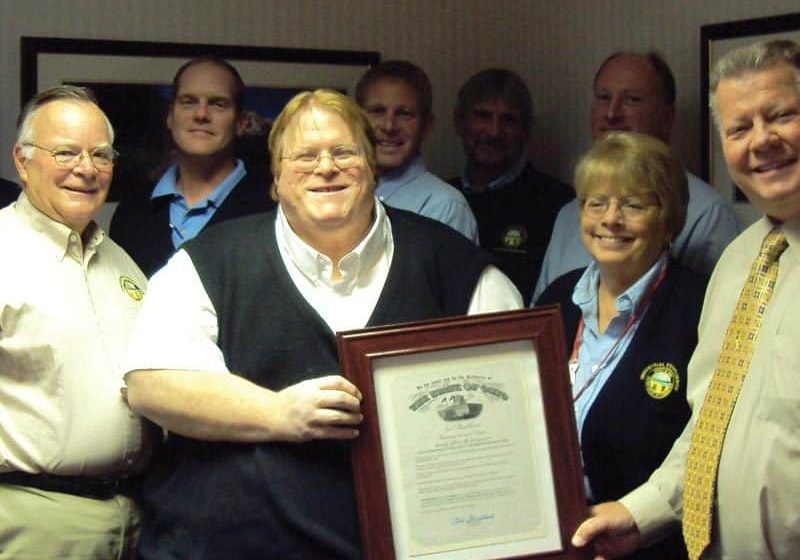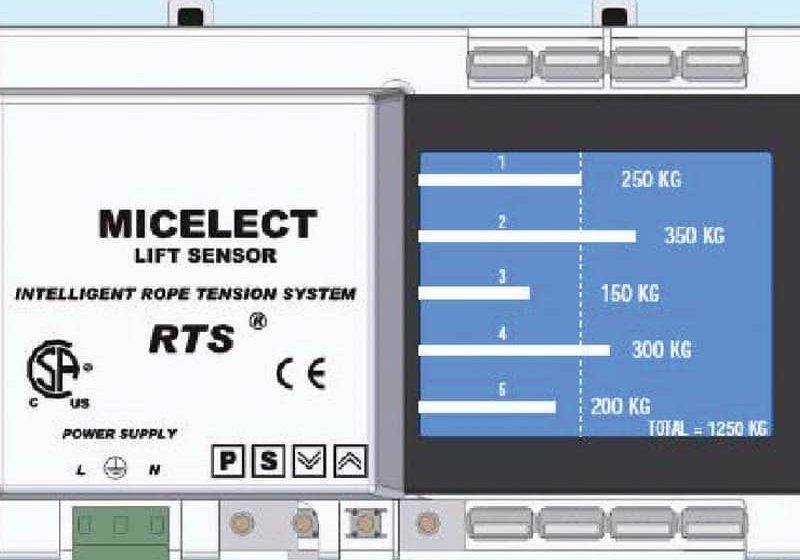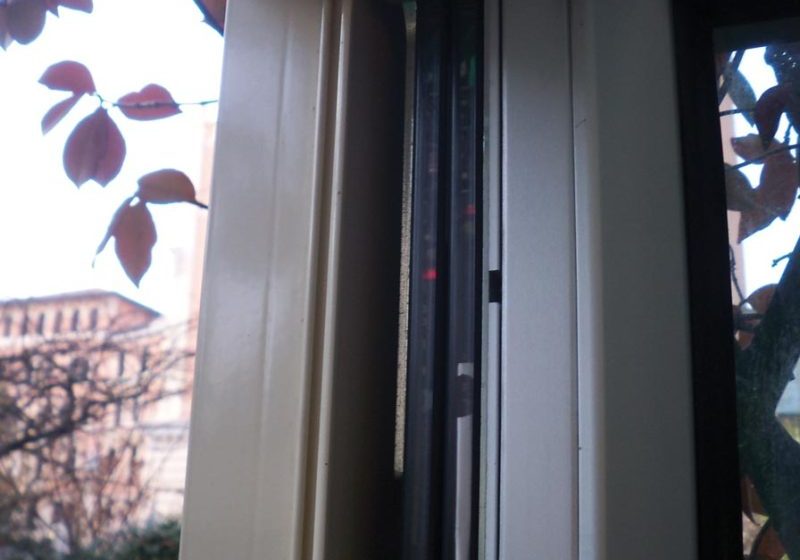Optical Elevator Door Sensor System with Planar Detection Area
Mar 1, 2011

A newly developed optical door sensor system improves detection performance, increases safety and overcomes the weaknesses of conventional door systems.
by Emiko Sano, Masahiro Shikai, Yuki Kawae, Akihide Shiratsuki, Hajime Nakajima and Toshio Masuda
Mitsubishi Electric Corporation, Japan
This paper was presented at ELEVCON Lucerne 2010, the International Congress on Vertical Transportation Technologies and first published in IAEE book Elevator Technology 18, edited by A. Lustig. It is a reprint with permission from the International Association of Elevator Engineers IAEE (website: www.elevcon.com). This paper is an exact reprint and has not been edited by ELEVATOR WORLD.
Key Words: Safety, automatic door, optical sensor
ABSTRACT
Conventional light curtain sensors used in elevators have gaps between their beams that make them ineffective at detecting objects small enough to fit between the gaps. To overcome this weakness and other weaknesses in conventional elevator door sensors, we have developed a new optical elevator door sensor system with a gap-free planar detection area. The system has two long, narrow strips of light sources and two imaging sensors mounted within the elevator door posts. The sensors can detect passenger fingers and other small objects, preventing them from becoming trapped by opening doors or pinched by closing doors. As an added safety feature, the red light source strips flash to let passengers know when elevator doors are about to open or close.
1. INTRODUCTION
Elevator safety is very important for passengers and an important part of barrier-free design. There are three common types of accidents that can happen on elevators – hands or objects can be pulled into the gap between an opening door and the door post (trapping accidents), hands or objects can become pinched between the closing doors (pinching accidents), and passengers running to board an elevator can collide with the closing doors (collisions). Various sensors are currently used to prevent these accidents.
To prevent trapping accidents (when doors are opening), non-contact optical sensors are used to detect when hands or handheld objects are about to be pulled in. To prevent pinching accidents (when doors are closing), elevators use sensors such as non-contact optical light curtains and mechanical safety shoes that detect pressure. To prevent collisions, elevators have systems that use ultrasound or light to detect passengers or objects approaching in the hallway.
However, these sensors have certain weaknesses. They can’t always detect when an object or person near the doors is in an accident-prone position, and they can’t detect passengers or objects of certain sizes and materials. To improve elevator safety, there was a need to develop a new type of sensor able to remedy the defects of current sensors.
To address this need, we devised and developed an optical elevator door sensor system with a planar detection area. The new system overcomes the defects of current sensors, enabling a single of set of sensors to prevent all three common elevator accident types. We started by analyzing why the sensors in current use sometimes fail to detect each type of common accident. This paper describes the findings of that analysis, and describes the configuration, detection principle and operation of the sensor system we developed in response.
2. DOOR ACCIDENTS AND CONVENTIONAL ELEVATOR DOOR SENSORS
This section describes the types of accidents that can occur when elevator doors open or close, the methods used by current safety equipment and safety sensors to prevent them, and their weaknesses.
2.1 Trapping Accidents (When Doors Open):
Figure 1 is a top view showing the configuration of an elevator’s doors and the surrounding structures. Elevators are designed so that the landing doors operate in response to the operation of the car doors. There are spaces between each car door and landing door. When the doors open, it is possible for passenger hands or handheld objects to become pulled into and trapped (caught) in the gap between one of the doors and the door post (the points labeled A in Figure 1).
Two main types of sensors are currently used to prevent this type of accident. One is a sensor that detects the load torque of the motor used to drive the doors. When the additional torque exceeds its threshold value, the sensor deems that some type of object has been pulled into the gap. To prevent the object from being pulled in further, it stops opening the doors and starts closing them. This sensor’s weakness is that it can only detect objects once they have been pulled in to the gap.
The other type of sensor designed to prevent trapping accidents is a non-contact optical type that detects objects that have approached the vicinity of a gap. These sensors irradiate infrared beams in the vicinity of each gap between the door and door post, and detect objects that cross any of these beams as potential causes of trapping accidents. Since this type of sensor triggers just by having its beam broken, it has the benefit of being able to detect objects before they become pulled in, unlike the first type of sensor. But its weakness is that it has difficulty detecting hands placed in gaps between infrared beams and door posts, since its infrared beams do not cover all the areas that hands could be pulled into.
2.2 Pinching Accidents (When Doors Close):
Hands or handheld objects can become pinched between the edges of closing elevator doors (the points labeled B in Figure 1). The sensors currently used to prevent this type of accident detect objects between the doors, and reopen the closing doors when an object is detected.
Again, two main types of sensors are currently used to prevent this type of accident. The most common type is a mechanical safety shoe. This sensor detects the pressure of an object contacting a door edge, and determines that there is an obstruction when the pressure exceeds the predetermined value. However, since this sensor doesn’t trigger if the pressure applied does not exceed the predetermined value, it has difficulty detecting soft fabrics or strings.
The other common type of sensor is the non-contact optical type, such as light curtains. These sensors shine multiple infrared beams between the doors to detect obstructions, so can detect the soft fabrics and strings that safety shoes have difficulty with. The weakness of these sensors is that the gaps between their beams prevent them from detecting any object small enough to fit between the gaps.
2.3 Collisions (When Doors Close)
Along with pinching accidents, the other type of accident that can happen when elevator doors are closing occurs when passengers attempting to board don’t anticipate that the doors are about to start closing, and collide with the closing doors. The sensors currently used to prevent this type of accident use ultrasound and infrared beams to detect passengers approaching the elevator. But a passenger running to board the elevator may be too fast for the doors to reopen in time after the sensor triggers, resulting in the passenger colliding with the doors.
2.4 Door Accidents
As described in Sections 2.1 to 2.3, the sensors currently used to prevent trapping accidents and pinching accidents have difficulty detecting soft materials such as fabrics or strings and small (thin) objects. Current sensors also have difficulty preventing collisions between doors and passengers running to board the elevator. Table 1 lists the accident scenarios that are difficult to detect and the reason for the difficulty in each case.
To improve elevator safety, we investigated and developed an optical elevator door sensor system with a planar detection area that overcomes the weaknesses described and can prevent all three common accident types.
3. OPTICAL ELEVATOR DOOR SENSOR SYSTEM WITH PLANAR DETECTION AREA
The sections below describe the specific configuration of each system module.
3.1 System overview
To find a method of overcoming the weaknesses of the sensors in current use (discussed in Section 2) and develop a system that can prevent all three common accident types (trapping accidents, pinching accidents and collisions) with just a single set of sensors, we devised an optical elevator door sensor system with a planar detection area covering the entire door plane. We also gave the system a light-based signal function. The system features are described below.
- Optical sensors can detect soft objects before accidents occur.
To enable detection without physical contact, we developed non-contact optical sensors. To prevent trapping accidents, our sensors can detect obstructions before accidents occur – impossible with sensors that detect load torque. To prevent pinching accidents, our sensors can detect soft fabrics and strings – difficult with safety shoes.
- Gap-free planar detection area can detect small (thin) objects
Among the infrared sensors in current use, even types that use multiple infrared beams such as light curtains have difficulty detecting small objects in the gaps between the beams. To overcome this weakness, we developed original new light source strips that generate a planar detection area without gaps. These light sources can detect almost all things that enter the area, even objects as small as a finger.
- Detection area covering nearly entire door plane can prevent both trapping and pinching accidents
- simultaneously
Among the infrared sensors in current use, even types that use multiple infrared beams such as light curtains have difficulty detecting small objects in the gaps between the beams. To overcome this weakness, we developed original new light source strips that generate a planar detection area without gaps. These light sources can detect almost all things that enter the area, even objects as small as a finger.
- System lights to let passengers know when doors are about to close
By letting passengers anticipate when the doors are about to start closing, the system prevents passengers running for the elevator from colliding with the closing doors.
To incorporate all these features, we developed an original optical sensor system comprised of imaging units and light source strips.
3.2 Configuration and detection principle
The sections below describe the specific configuration of each system module.
3.2.1 Configuration
The system consists of two light source strips each having a triangular detection area, and their corresponding imaging units. The two light source strips work together to form a rectangular planar detection area. The light source strips are mounted vertically along the door posts. The imaging units consist of a lens and imaging element. Each is mounted on the door post opposite its corresponding light source strip, angled to place all its light sources within its field of view. The imaging units image the long, narrow light source strips, and detect any object entering between themselves and each light source strip by detecting breaks in the light source image.
The left side of Figure 2 shows the sensor configuration. Figure 2 (a) shows the light source image when no object has entered the detection area. Figure 2 (b) shows an example of the light source image when an object has entered the area. The light source strips and imaging unit optics needed to overcome various technical difficulties to implement the features described in Section 3.1 and enable the system to be mounted in elevators of various door sizes. The features of the light source strips and imaging units are described below.
- Light source strips
In addition to their primary function as light sources for optical detection, the system’s light sources also have a function that lets them act as display lights to signal passengers. Implementing their primary function required the creation of unbroken light source strips that would create a gap-free planar detection area. To do so, we optimized the placement interval of the red LEDs in each strip, and mounted light diffusion plates to enable continuous light emission of uniform intensity. This design resulted in light sources that create a planar detection area free from the gaps of conventional line-shaped detection areas.
- Imaging units
To detect small objects at nearly any point in the entire front plane and enable use in many different types of elevator, the imaging units needed to be small and support a variety of door widths without refocusing. While overcoming both these problems was difficult, optimizing the aspherical lens design enabled a large depth of field (2,200 mm) and wide angle of view (66degree) while keeping the total lens unit length under 10 mm.
3.2.2 Detection principle
As shown in Figure 2 (a), when no object is in the detection area, each imaging unit detects the unbroken image created by its light source strip. When an object enters the detection area, it disrupts part of the light shining on either of the imaging units from its light source strip, and creates a break in the image as shown in
Figure 2 (b). The sensor system uses these to detect objects in the detection area.
3.3 System specifications
Table 2 shows the main specifications of our sensor system. Its planar detection area supports doors of 1,800 mm in height and of any width between 800 and 1,200 mm. It can detect all non-transparent objects larger than 9 mm in diameter at any point in this area. It can detect thinner objects in some locations, and can detect objects of 3 mm in diameter at the center of the door opening. Since the light sources are also used to alert passengers, we selected red as the light source color for its common use as a warning color. The light sources light from near floor height to a height of about 1,800 mm, making them readily visible by passengers with widely varying lines of sight, ranging in age from children to adults to seniors. Figure 2 shows the appearance and detection area of the sensor system mounted in an elevator car.
3.4 Sensor and door operation
To prevent trapping accidents (from opening doors), and pinching accidents or collisions (from closing doors), sensor systems need to do more than just detect obstructions – they also need to open and close the elevator doors in the proper timing as the elevator operates. Our system’s sensor modules detect obstructions and its light sources flash in conjunction with door OPEN and CLOSE operations. The elevator control module controls the door OPEN/CLOSE operation and plays recorded voice messages selected according to the detection status. These sensor and elevator control operations are designed to keep the elevator’s routine operations efficient. The sections below describe the operation performed to prevent each type of accident.
3.4.1 Preventing trapping accidents
When the elevator car is moving, the system turns off sensor detection and the light sources. Before the car has arrived at the destination floor, the system starts flashing the light sources and starts sensor detection. Starting to flash the light sources at this point in time enables the passengers in the car to anticipate when the doors will start opening, and alerts them. If a sensor detects an obstruction at this time, before opening the doors, the system plays a recorded voice message alerting the passengers that the doors are about to open and prompting them to move away from the doors. Delaying the start of the door OPEN operation gives the passengers time to move away from the doors. When the door OPEN operation starts, the light sources stop flashing and the detection operation stops. Detection stops to prevent drops in routine operation efficiency due to unnecessary detection of passengers attempting to get out through the gap between the opening doors. The operations described in this section help prevent trapping accidents.
3.4.2 Preventing pinching accidents
When the system detects an obstruction before the doors start closing, it turns off the light sources and extends the FULL OPEN wait time. If it doesn’t detect an obstruction, it starts to close the doors, flashes the light sources and continues the detection operation. If the system detects an obstruction while closing the doors, it shuts off the light sources and starts opening the doors again. If it doesn’t detect an obstruction, it continues the detection operation until the doors have closed.
3.4.3 Preventing collisions
While the doors are open, the system turns off the light sources. Then starting from about one second before the doors start closing, it flashes the light sources and starts the detection operation. Flashing the light sources before the doors close lets incoming passengers anticipate when the doors are about to close, preventing collisions with them.
4. CONCLUSION
To improve elevator passenger safety, we developed a new non-contact optical sensor system with a gap-free planar detection area. The system can prevent all three common types of elevator accidents (trapping accidents, pinching accidents and collisions) with just a single set of sensors. It can detect soft materials and objects small enough to slip between the beam gaps in conventional sensors, while its light sources double as display lights to prevent collisions. This sensor system has already been released as a product.
Get more of Elevator World. Sign up for our free e-newsletter.









